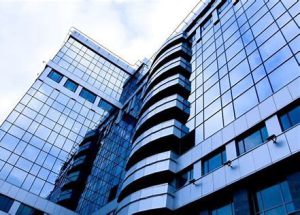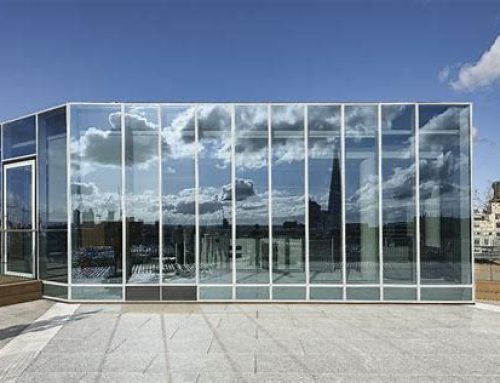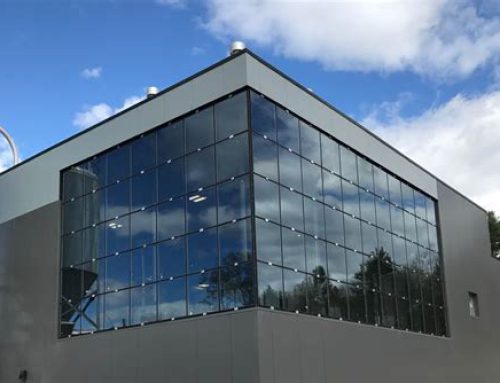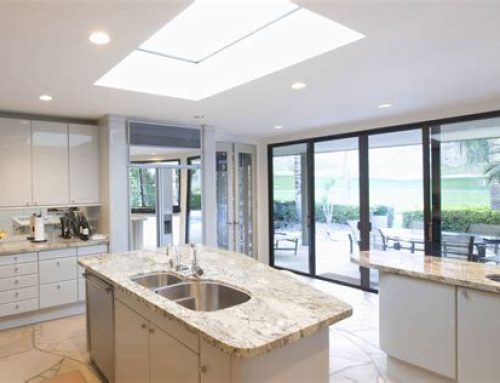sale price of the profile and implementation of the modern glass building facade in Europe

Sale price of profile and implementation of modern glass building facade in Europe ,In the realm of modern architecture, glass has emerged as a quintessential material, reshaping skylines and redefining urban landscapes across the globe. Europe, with its rich architectural heritage juxtaposed with contemporary design philosophies, stands as a fertile ground for the implementation of glass building facades. Not only do these structures embody elegance and sophistication, but they also signify technological advancements and sustainability. As the demand for such architectural marvels surges, exploring the sale prices and implementation strategies becomes imperative.
The Rise of Glass Facades
Glass facades offer a myriad of benefits that resonate with the ethos of contemporary architecture. They provide unparalleled transparency, flooding interiors with natural light while offering breathtaking panoramic views of surroundings. Moreover, glass facades promote energy efficiency by optimizing daylight utilization and reducing the need for artificial lighting, thus lowering carbon footprints. This eco-conscious approach aligns seamlessly with Europe’s commitment to sustainable development and green building practices.
Sales Price Dynamics
The sale price of glass building facades varies significantly depending on several factors, including the type of glass used, customization requirements, size of the project, and geographical location. In Europe, where architectural diversity is abundant, the cost spectrum for glass facades spans a wide range.
- Type of Glass: From traditional single-pane glass to cutting-edge laminated, tempered, or insulated glass, the pricing diversifies with the complexity and performance characteristics of the material.
- Customization and Design Complexity: Architectural firms often collaborate closely with glass manufacturers to tailor designs according to the client’s vision and project requirements. Intricate designs or bespoke features may escalate the overall cost.
- Size and Scale of the Project: Larger projects tend to benefit from economies of scale, driving down the unit cost per square meter of glass facade. Conversely, smaller-scale projects might incur higher costs due to the lack of such advantages.
- Geographical Factors: Regional differences in labor costs, regulations, and market demand contribute to variations in the sale price of glass facades across different European countries.
Implementation Strategies
The implementation of modern glass building facades demands meticulous planning, innovative engineering solutions, and adherence to stringent safety standards. Architects and developers employ various strategies to ensure the seamless integration of glass facades into the built environment:
- Collaborative Design Approach: Architects, engineers, and glass manufacturers collaborate from the conceptualization stage to address technical challenges, optimize structural integrity, and achieve design excellence.
- Material Selection and Performance Analysis: Thorough analysis of glass properties, including thermal conductivity, solar heat gain coefficient, and acoustic insulation, informs material selection to enhance energy efficiency and occupant comfort.
- Advanced Construction Techniques: Innovations such as unitized curtain wall systems, 3D printing, and parametric modeling facilitate precision engineering, rapid assembly, and cost-effective construction of glass facades.
- Sustainability Integration: Integrating sustainable features such as photovoltaic glass panels, dynamic shading systems, and green roofs enhances the environmental performance of glass facades, aligning with European sustainability goals.
- Regulatory Compliance and Safety Measures: Adherence to building codes, fire safety regulations, and seismic resilience standards ensures the safety and durability of glass facades, mitigating risks associated with natural disasters and human error.
Case Studies in European Architecture
Several iconic structures across Europe exemplify the successful implementation of glass building facades, blending aesthetic appeal with functional efficiency. From the shimmering Shard in London to the avant-garde Philharmonie de Paris, these architectural masterpieces showcase the transformative potential of glass in shaping contemporary cityscapes.
Balancing Aesthetics and Functionality
One of the key challenges in implementing glass building facades lies in striking a delicate balance between aesthetics and functionality. While glass exudes a sense of modernity and transparency, ensuring structural robustness, thermal performance, and occupant comfort remains paramount. Architects employ advanced computational tools, such as Building Information Modeling (BIM) and Finite Element Analysis (FEA), to simulate and optimize the performance of glass facades under various environmental conditions and loading scenarios. By leveraging these tools, architects can fine-tune designs to achieve the desired aesthetic effects without compromising on performance metrics.
The Role of Sustainable Design
In an era marked by increasing environmental consciousness, sustainable design principles play a central role in the implementation of glass building facades. Beyond energy efficiency, sustainability encompasses a holistic approach that considers the entire lifecycle of the building, from material sourcing and construction to operation and eventual decommissioning. Integrating passive design strategies, such as natural ventilation, daylight harvesting, and passive solar heating, reduces reliance on mechanical systems and minimizes environmental impacts. Additionally, the use of recycled materials, low-emissivity coatings, and innovative facade systems enhances the environmental performance of glass facades, aligning with Europe’s ambitious sustainability targets.
Addressing Challenges and Opportunities
While glass building facades offer numerous benefits, they also pose certain challenges that must be addressed during the implementation phase. These include concerns related to glare, privacy, maintenance, and durability. Employing advanced glazing techniques, such as fritting, tinting, and double-skin facades, mitigates glare and enhances visual comfort for building occupants. Moreover, proactive maintenance protocols, such as regular cleaning, inspection, and repair, prolong the service life of glass facades and preserve their aesthetic appeal over time.
Furthermore, the implementation of glass building facades presents opportunities for innovation and experimentation in architectural design. Emerging technologies, such as electrochromic glass, smart sensors, and kinetic facades, enable dynamic, responsive building envelopes that adapt to changing environmental conditions and user preferences. By embracing these technological advancements, architects can push the boundaries of design creativity and redefine the possibilities of glass in architecture.
Embracing Cultural Diversity
Europe’s architectural landscape is as diverse as its cultural tapestry, reflecting centuries of artistic, social, and technological evolution. From the Gothic cathedrals of France to the Bauhaus-inspired structures of Germany, each region boasts its own architectural identity and vernacular. The implementation of glass building facades provides a canvas upon which architects can blend contemporary design aesthetics with local heritage and cultural context. By incorporating elements of traditional craftsmanship, regional materials, and cultural motifs into glass facades, architects celebrate the rich cultural heritage of Europe while embracing the spirit of innovation and progress.
Fostering Urban Connectivity
In an era of rapid urbanization, glass building facades play a crucial role in fostering connectivity and interaction within urban environments. By opening up vistas and creating visual permeability between indoor and outdoor spaces, glass facades dissolve boundaries and forge a sense of connection with the surrounding context. Public spaces, such as plazas, parks, and pedestrian thoroughfares, benefit from the transparency of glass facades, inviting pedestrians to engage with the built environment in meaningful ways. Moreover, mixed-use developments that integrate residential, commercial, and recreational functions capitalize on the vibrancy and dynamism facilitated by glass facades, catalyzing social interaction and community engagement.
Navigating Regulatory Frameworks
The implementation of glass building facades in Europe is subject to a complex regulatory framework that governs various aspects of building design, construction, and operation. Building codes, zoning ordinances, historic preservation guidelines, and environmental regulations shape the built environment and influence architectural decision-making. Architects and developers must navigate these regulatory frameworks with diligence and foresight to ensure compliance while realizing their design vision. By collaborating with regulatory authorities, engaging in public consultation processes, and adopting best practices in sustainable design and construction, architects can navigate regulatory hurdles and streamline the implementation of glass building facades in Europe.
Challenges and Considerations in Implementation
While the allure of glass facades is undeniable, their implementation comes with its share of challenges and considerations. Architects and developers must navigate these complexities to ensure the success and sustainability of their projects.
- Energy Efficiency: Despite their aesthetic appeal, glass facades can pose challenges in terms of energy efficiency, particularly in extreme climates. Issues such as heat gain in summer and heat loss in winter necessitate careful consideration of insulation, solar shading, and glazing technologies to optimize thermal performance.
- Durability and Maintenance: Glass facades require regular maintenance to preserve their appearance and structural integrity. Factors such as weathering, pollution, and vandalism can affect the longevity of glass surfaces, necessitating proactive maintenance protocols and durable construction materials.
- Safety and Security: Ensuring the safety and security of occupants is paramount in the design and implementation of glass facades. Measures such as impact-resistant glass, bird-deterrent strategies, and blast-resistant glazing mitigate risks and enhance occupant safety in high-traffic or high-risk environments.
- Cost Considerations: While glass facades offer numerous benefits, they can also be costly to implement, particularly for large-scale projects or complex designs. Balancing design aspirations with budgetary constraints requires careful cost analysis, value engineering, and transparent communication between stakeholders.
- Regulatory Compliance: Compliance with building codes, zoning regulations, and environmental standards is essential to the successful implementation of glass facades. Architects must stay abreast of evolving regulatory requirements and ensure that their designs adhere to applicable laws and guidelines.
Conclusion: Shaping the Future of Architecture
In conclusion, the sale price and implementation of glass building facades in Europe represent a convergence of innovation, sustainability, and design excellence. As architects and developers continue to push the boundaries of creativity and technology, glass facades will play an increasingly prominent role in shaping the urban fabric of Europe and beyond.
By embracing interdisciplinary collaboration, sustainable design principles, and a commitment to excellence, Europe is poised to lead the way in redefining the possibilities of modern architecture. Through the seamless integration of glass facades into the built environment, architects can create spaces that inspire, connect, and endure for generations to come.
As Europe charts a course towards a more sustainable, resilient, and inclusive future, glass facades stand as a symbol of progress and possibility, reflecting the continent’s rich architectural heritage and its unwavering commitment to innovation and creativity. With vision, determination, and a spirit of collaboration, Europe will continue to shape the future of architecture, one glass facade at a time, Sale price of profile and implementation of modern glass building facade in Europe.





Leave A Comment